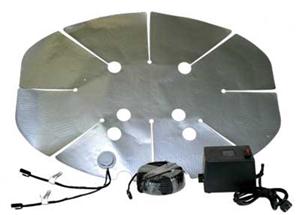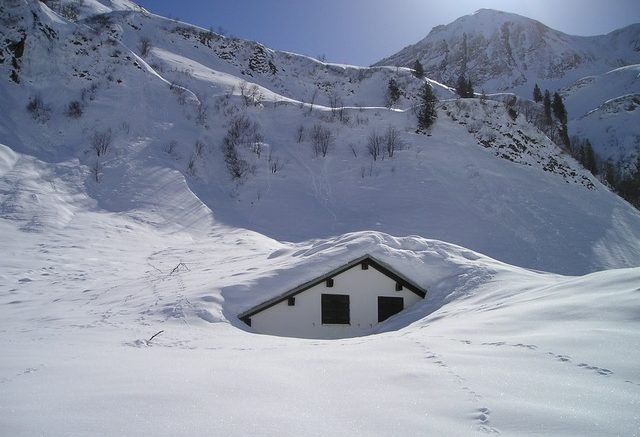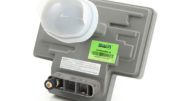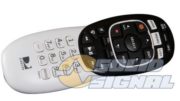This time of year, folks in the northern half of the country are getting intimately familiar with snow. Snow’s going to be a big part of our lives in the coming months, so it’s time to have a frank discussion about how satellite and snow get along together.
Snow fade is a real thing, yes.
We usually call it “rain fade” but it’s the same thing in the snow. Heavy clouds and falling water block satellite signals. It’s a characteristic of those frequencies that satellites use, especially the ones used by DIRECTV. They’re more easily scattered than signals from terrestrial radio towers.
Snow fade usually only happens when the snowfall is very heavy or when the cloud cover is extremely, extremely heavy. But, it does happen. When it happens you lose signal. You don’t lose internet, but you do lose live TV.
When things lighten up a bit, the signal comes back. The best data from DIRECTV says that their service is about 99.5% reliable, which means potentially about 45 minutes of outage per week. I think that data is actually pretty conservative. I personally experience about 45 minutes of outages per year, because most outages are very quick. But even 45 minutes a week on average is about one-tenth of what cable TV customers get.
Is there a way to avoid snow fade?

The worst outages are caused by snow on the dish. Snow on the reflector scatters the signal and snow on the LNB blocks signals completely. That’s the worst because snow on the dish is going to be a problem until you get it off there.
The best solution to avoid snow on the dish is a dish heater. A dish heater is basically a big sticker that goes on the dish with a heating element. The dish heater is triggered automatically so it doesn’t waste energy. It uses low-power wiring so it’s not a fire hazard. I personally think that everyone who lives in the snow should have one.
You can install a dish heater yourself by putting the sticker on the front. You can also see that there is a pattern of holes that let you put it on the back, but you’ll have to take the dish apart to do that. Not everyone is really ready for that.
What about fade from falling snow?
Depending on where you read, you’ll find people giving you a lot of advice. Some will tell you a bigger dish will help, some will suggest an amplifier. In general, neither of these options will work for the average satellite TV user. Amplifiers can be used in commercial satellite systems but not with the dishes used for home users. And, there simply isn’t a bigger, more effective dish designed for nationwide use.
The best way to ensure you have signal, even in snow, is to make sure your dish is very precisely aimed. Even being off by 1/32″ means that your dish is aimed several miles from where it should be. If your dish hasn’t been reaimed for two years or more, it’s time for a checkup. If you’re good at doing it yourself, that’s great. Check the adjustment screws and use a good satellite meter. If you’re not comfortable with the process, this is definitely a case where it’s worth hiring a professional. If there’s someone local to you, reach out. No one in your area? Call 888-233-7563 and our techs can recommend someone in your area or get your satellite provider to dispatch a technician.





